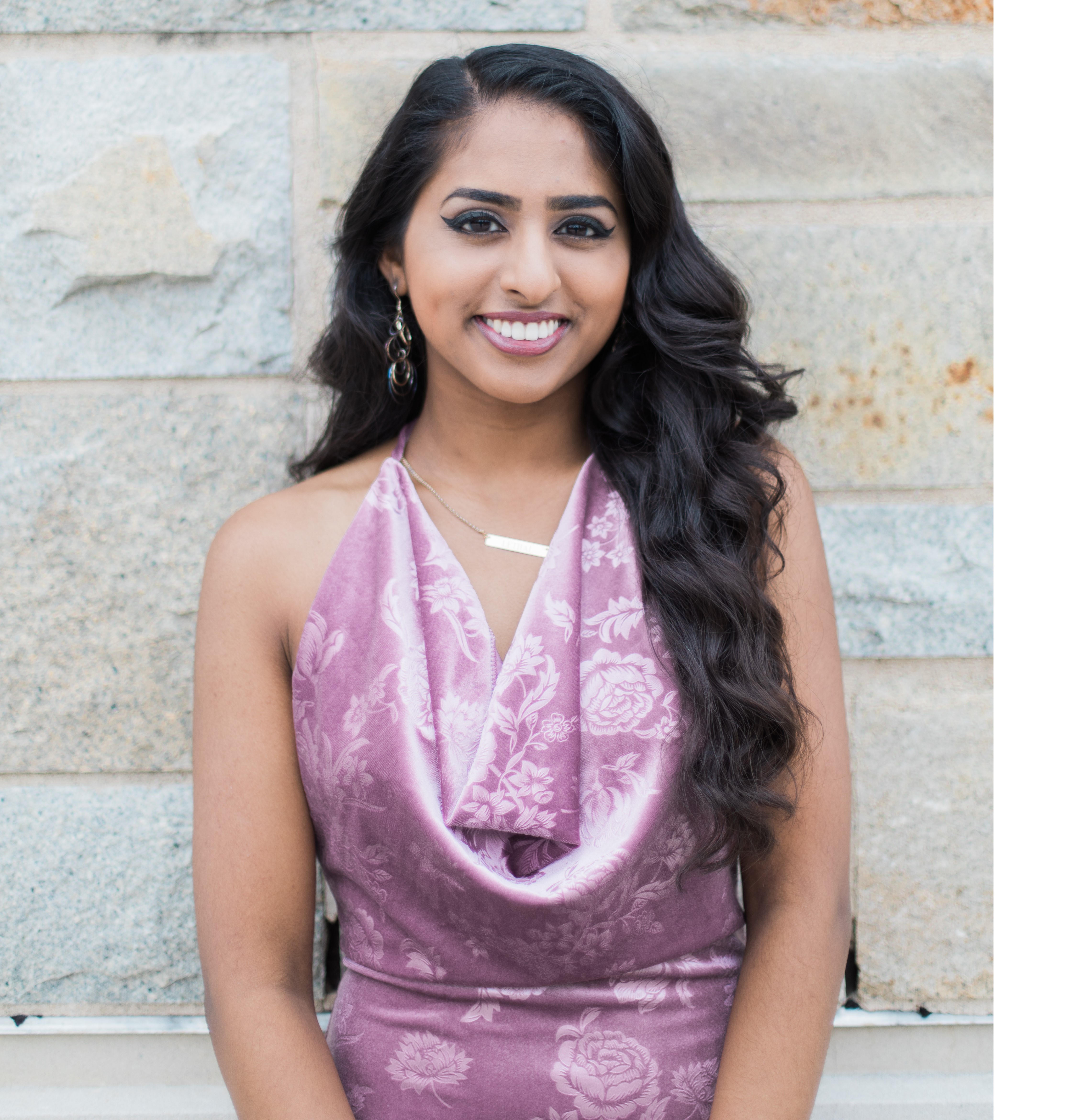
As a community, we strive to embrace all individuals of various ethnicities, genders, religions, and sexualities. We believe that everyone should be treated equally and with respect. This series of spotlights focuses on social justice pieces, so that everyone feels welcomed and supported.
Rincy Jacob, a senior at St. John's University, is pursuing a degree in Clinical Laboratory Science. She has been a part of the DDN community since her freshman year of college, when she joined the Bollywood-Fusion team SJU Raaz. During her sophomore and junior year, she was nominated as co-captain and strived to motivate her team to push their limits. She has always wanted to create her own unique content, using DDN as her inspiration.
Interview:
Describe your dance background.
I began dancing when I was three years old and started with Indian classical dance. I mainly trained in Bharatanatyam, but also learned Kuchipudi for about a year. I stopped going to dance classes when I was 16, but I continued to take every opportunity I could to perform Bollywood choreography. I am so happy to spread joy and my passion with others, whether it be at church events, weddings, engagements, Indian celebrity shows, or senior living homes.
When I was in elementary school, I had exposure to salsa, tango, hip-hop, and African tribal dance styles. I was lucky to go to a school that invited teachers with various dance backgrounds, for events throughout the year. In middle school, I started learning how to break dance with my friends and in high school, I knew I wanted to keep dancing in college, if I could. After joining SJU Raaz, I became a part of DDN and widened my horizon with bhangra and different styles within hip-hop.
Though I had exposure to a wide variety of styles, Indian classical will be engraved in me forever. It is the style that I love the most, because it taught me how to feel when I dance. My passion continued to inspire me, as I push myself outside my limits and dabbled in contemporary/modern choreography.
Who are your biggest dance inspirations, and why?
Honestly, my biggest dance inspiration is the DDN community. If I ever come to a dance block during choreography, all I have to do is watch a few team performances or dance videos to get back on my feet. I strive to become that person for somebody else.
Social Justice Piece
How did the concept of your video arise? What made you want to address this social issue, in particular, through dance?
After discovering Escape by Naiem Reza, I found it very intriguing and built off of that feeling. Initially, I thought of depicting depression, and the internal struggle that follows, to be my focus. However, certain aspects of the song made me experience a sense of attack. I have always advocated for healthy relationships amongst individuals and have strong negative opinions on domestic violence. Naturally, I decided to choose a different course of action. Additionally, people have often overlooked and dramatized this issue for comedic purposes and I wanted to change that outlook. I have personal relationships with individuals who have gone through domestic violence and although there are always different outcomes depending on the relationship, the frequency of domestic violence is outrageously high. Our society seems to be spreading hate so much that half the population thinks it is okay to let out their anger on others, through gun violence, hate crimes, and domestic violence. I am one to stand up for what I believe is right. If I can have any positive influence in the world, I want to take that opportunity. This issue connected with me, so I worked to create a story to bring a serious awareness to domestic violence.
How did you go about tackling the choreography and how did you go about selecting the song for the piece?
I have been recording dance videos for a while now and have been wanting to produce a video that contains an impactful message. In May 2018, I was listening to music from some of my favorite DJs in the circuit, on SoundCloud, and came across Escape by Naiem Reza. I immediately fell in love with it and knew it was the song I wanted to use for my video. It was not just an ordinary mix. I instantly felt a multitude of emotions and my brother Prince helped me delve into different routes the video could take. I created a story map for all of these possibilities and decided on the most understandable and straightforward plot. Ultimately, I split it up into five sections/emotions: introduction, happy, angry, sad, and outro. With each of these parts, I had a vision of what I wanted to see in the video.
The choreography for each section fell into place after the storyline was complete. I took my time and came up with choreography as it came to my mind. By repeatedly listening to the song, I was able to connect each part with a different dance style. I viewed happy as classical, angry as hip-hop, and sad as modern. These emotions drove me to create my choreography as how it is today. I spent about three weeks doing trial and error for different sets of 8-counts. I continuously took videos in between and obtained critiques and opinions from close friends. Although I did not work on the choreography every day, I was determined to make something that I was proud of and that showed my story well. Different portions were meant more for acting or emotional use, rather than straight steps. Towards the end of the choreography stage, I changed a few aspects to incorporate visual effects.
How did you work with the videographer to make your idea come to life?
After confirming my videographer, Shone David, I scheduled a Skype session to explain the concept to him and his partner, Lesley. We discussed the basic storyline, as well as my vision of the location and camera angles to bring it to life. I then sent them a detailed outline of my vision and the edited version of the song with corresponding times.
We decided a date for shooting and on the day of, we spent time looking at the location and implementing what angles would work best. We used artificial lighting, both from the room and those attached to the camera, which we tested out and changed throughout the piece. In the introduction and outro, the lighting is dim as compared to the rest of the video. Each section was recorded separately and took about 4-5 takes. After a section was recorded, we watched it and corrected parts to better capture the choreography. Shone did an excellent job in capturing the essence of my piece and we worked together to find a middle ground in terms of visuals.
During the editing phase, there were a great amount of changes. Angles and white space were two of our obstacles, but Shone continued to do a great job of understanding any corrections or requests that I had. He implemented everything and really brought my vision to life.
Explain the significance of the outfit change and color variance in your video.
When initially developing the plot, I wanted this video to be a continuous “one take” piece that would express the character’s flow of emotions. However, with the various styles of dance taken into account, as well as emotions throughout the piece, I viewed three separate outfit changes to occur simultaneously with the color variances.
The first outfit is a black halter top and jeans, which is also seen in the outro. This outfit is meant to represent the individual in their current everyday life. The casual, but dark, clothing emphasizes the character’s intense despair of feeling trapped in their relationship. During both the beginning and end, the same color variance was used. It was dark and showed the character as the main focus, alluding to the fact that they are alone.
The second outfit consists of a red and gold Indian blouse, black harem pants, and ghungroos. This section highlighted Indian culture through the ensamble and dance style, while expressing a joyous emotion. The color variance was of high contrast, was meant to be bright, and perfectly embodied happiness.
The third outfit is a black top with dark green pants. This hip-hop outfit fit the choreography style and also portrayed a fighting vibe. The harsh red tone of the lighting matched the aggressive choreography. I wanted to emphasize that this section was about anger and violence, through these subtle additions.
The last notable outfit is a white top with black pants. With this section, I wanted to depict a sense of distress, while focusing in on the character and her current state of mind. The choreography was meant to be more modern/contemporary and the lighting paired well because it was brighter and more focused.
Are you planning on covering other social issues in the future? If so, which ones?
I would like to cover other social issues in the future, but I have not focused on another just yet. I am passionate about self-awareness and issues, such as depression, so look forward to more pieces from me.
Fun Facts & Social Media
My hands are always cold, even when it is slightly warm outside. When people do not believe me, I put my hand on their neck and they tend to freak out.
I am known for cracking almost every bone in my body including my back, hip, neck, knees, ankles, and fingers.
Desserts are my favorite type of food, but my favorite dessert is a Smores Crepe.
